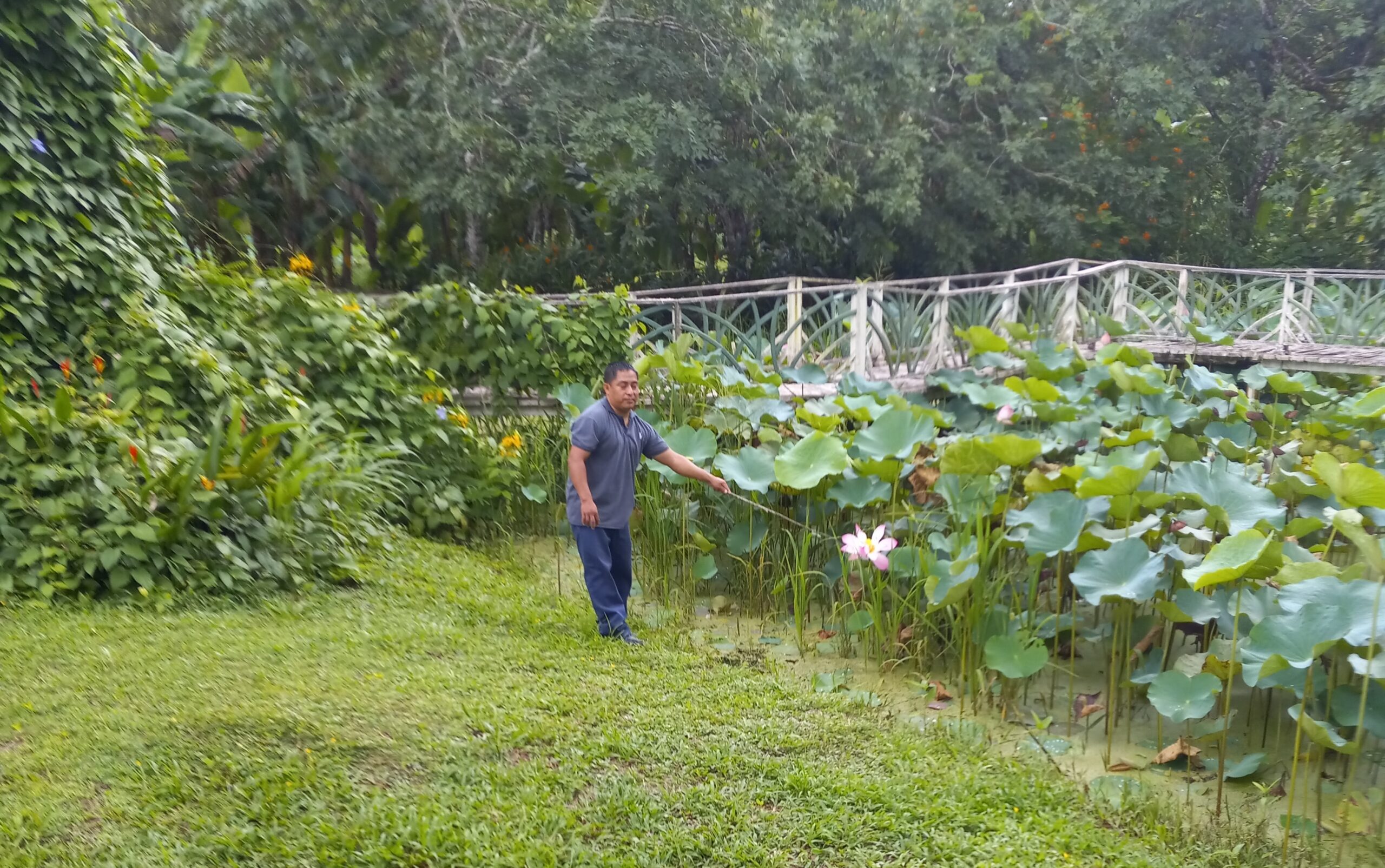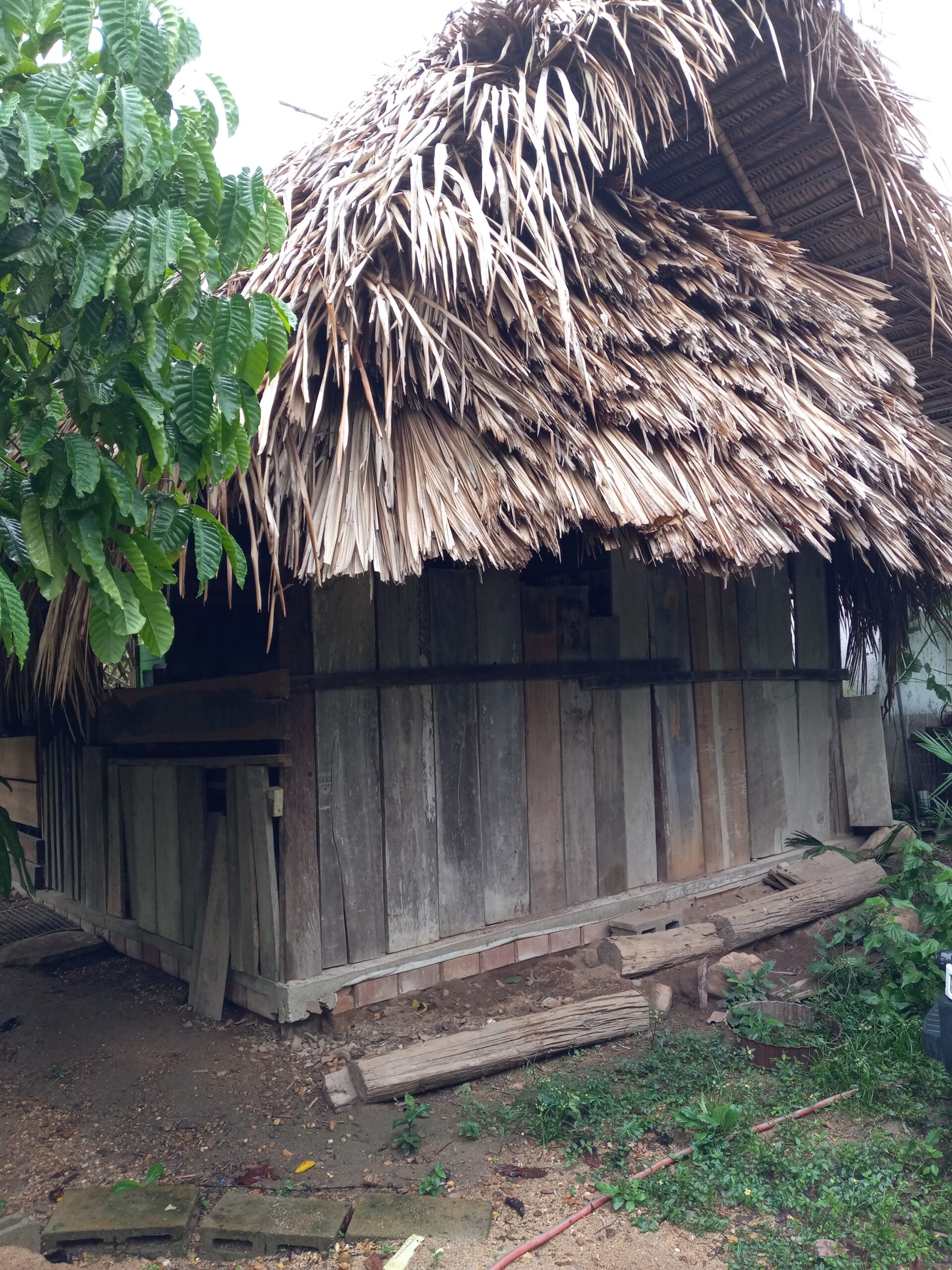Editor’s Note: This is Part 3 of a series by Olasee Davis on the St. Croix Hiking Association’s recent trip to Belize. Read Part 1 here and Part 2 here.

Part three series of our adventure in Belize by the members of the St. Croix Hiking Association will focus on the tour we took in the southern part of the country. Belize is a beautiful place with lush green open flatlands for miles, and mountain ranges towering towards the blue sky and enhancing the landscape of the country. On this day we didn’t hike on foot. Instead, after breakfast we loaded into two vans and headed down south to visit the Spice Farm and Botanical Gardens, which are nestled at the base of the majestic Maya Mountains in the Toledo District of Belize.

It was a long drive there with views of open fields of bananas, citrus, coconuts, and many rivers flowing into the Caribbean Sea. Along the way, we saw some of the traditional houses built by the Maya people. They were built in an oval shape from wooden poles with clay and mud (wattle and daub). The roof was thatch, made with plants such as native palm leaves to keep the rain out and vines they called “tie-tie,” which secure the posts of the house frame.
As with Belize’s cultural history, thatch roof houses were once common in the Caribbean region. In fact, the indigenous people of the Caribbean archipelago for millennia built their houses like the Maya people in Belize. During the colonial period, thatch roof houses were common. Even up to the 1920s, and through the 1950s or early 1960s, thatch roof houses still existed in some areas in the region, including the U.S. Virgin Islands.
You might not be aware that a lot of cultural practices, such as making fish pot from palm leaves and thatch roof houses, we borrowed from the indigenous people of the Caribbean. Today, thatch roofs are used as a tourist attraction where some businesses use them to shade their guests on beaches from the sun and rain. While I was in Belize, I saw a bar and restaurant on the beach using a thatch roof as part of the establishment.

At last, we arrived at the Spice Farm and Botanical Gardens. We stretched our legs from the long drive and got ready to explore the Spice Farm. It is hard to describe the setting and beauty, especially the furniture layout, which captured our eyes. The tables, chairs and other furniture pieces were beautiful. Like I said before, it is hard to describe unless you were there to witness for yourself, the loveliness of the furniture. What beauties to behold of furniture made from the local woods of Belize such as teak (Tectona grandis), red mahogany (Eucalyptus resinifera), and rosewood (Dalbergia latifolia).
As we entered the Spice Farm grounds, believe me, the first thing that struck us was the incredible scents; the air was quite aromatic, like perfume and fresh herbs blowing into the wind of the garden. It reminded me of when I was a young boy hiking along the North Side of St. Thomas and smelling the French farmers’ thyme scents in the air that were growing on terraces along the hillsides of Estate Dorothea.

At the 500-acre Spice Farm, we explored the garden by riding on two trailers with comfortable benches, pulled by two tractors because of our group size, as the horticulturalists explained to us the history of the farm. The horticulturalists picked a variety of herbs and flowers, allowed us to observe and pass them around, and pointed out the many plants that have a major impact on the culinary industry of the world. For example, medicines extracted from different plants, various perfume trees, and spices in foods.
You name it, the garden had it! Talking and learning about flowers in the garden and the many varieties, your head would hurt, just by seeing their beauty. The best part was when we were given the opportunity to touch, smell, and handle the spices in our willing hands as we drove along in the garden. The horticulturalists were kind enough to stop along the garden route and explained to us the botanical history of the plants, whether native, exotic or endemic to Belize.
Some of the spices included tellicherry black pepper, cardamon, allspice, vanilla, turmeric, cinnamon, cloves, and nutmeg. There was a huge variety of tropical fruit trees both native and exotic from around the world, especially from India. Talk about a large and endless variety of flowers, both native and exotic. Orchids were also popular in the garden. I saw the Black Orchid (Encyclia cochleatum) there, which is the national flower of Belize.
In 1990, Dr. Matthew and his wife, Tessy, originally from India, started the Spice Farm and Botanical Gardens. They had both fallen in love with Belize, its friendly people, and the natural beauty of the country.

From the Spice Farm, we drove to Coleman’s Café Restaurant to have a late lunch. The food was presented buffet-style in a perfect setting for hikers like us. The food was well laid out, delicious, and tasty that I even went back for seconds. For the first time, I ate “cohune cabbage,” and it was tasty and very good. Cohune cabbage is made from the heart of palm tree. In Belize, it is chopped and stewed with turmeric into a delicious, soft, buttery side-dish.
Historically on St. Croix, the heart of Royal palms (Roystonea borinquena) trees were eaten as a vegetable by Crucians. Older Crucians call the Royal palm “Cabbage Palm.” After we finished eating, we washed our food down with local drinks. After that, we had homemade ice cream. With our bellies filled, we headed back to Dangriga town. It was a good day, believe me, where we didn’t hike on foot but adventured all the same.
— Olasee Davis is a bush professor who lectures and writes about the culture, history, ecology and environment of the Virgin Islands when he is not leading hiking tours of the wild places and spaces of St. Croix and beyond.










